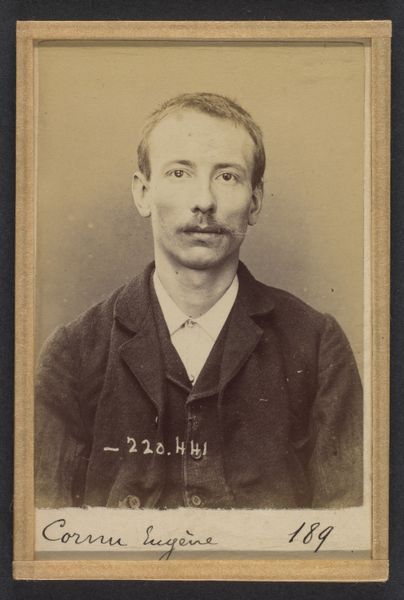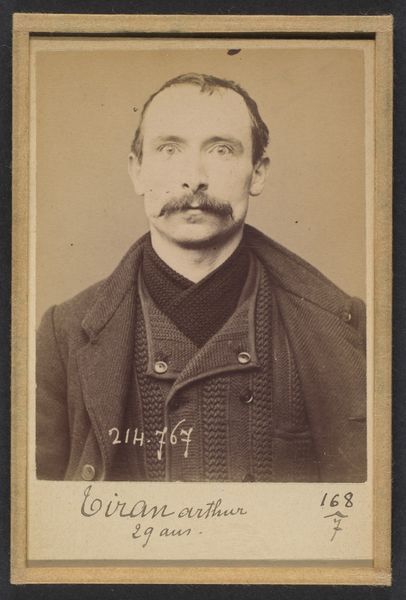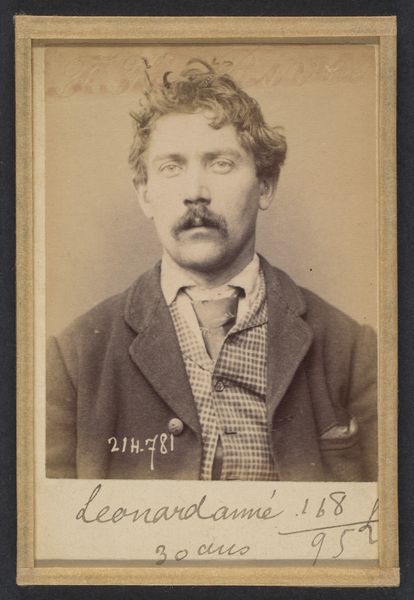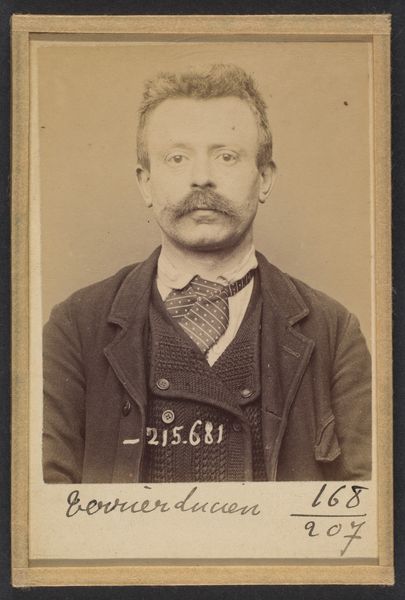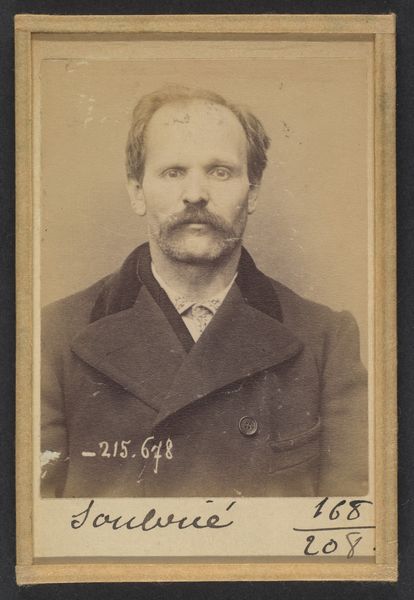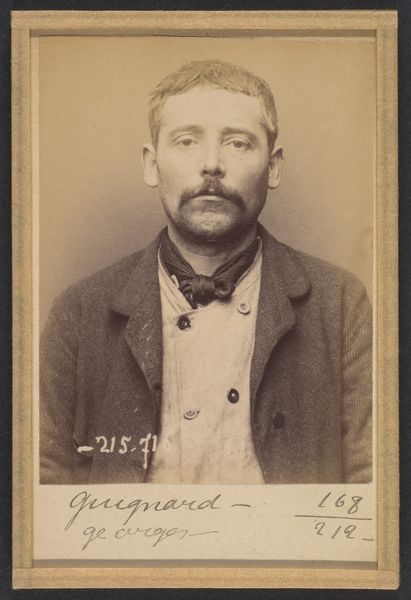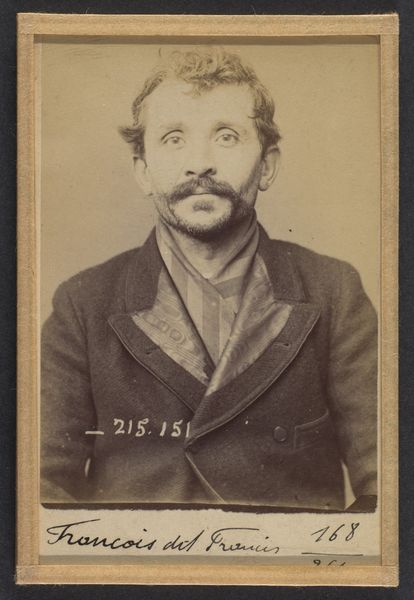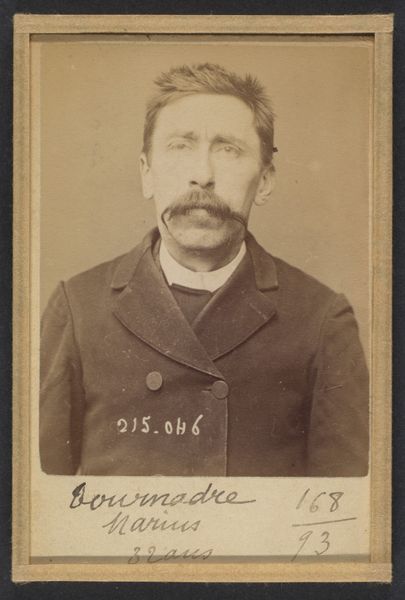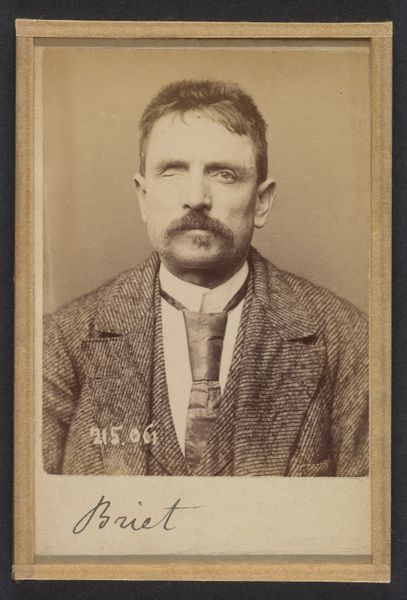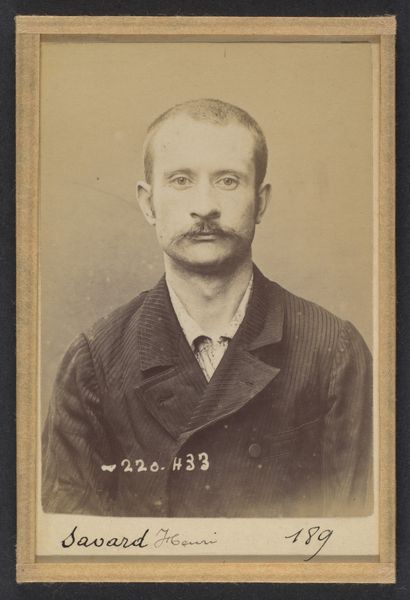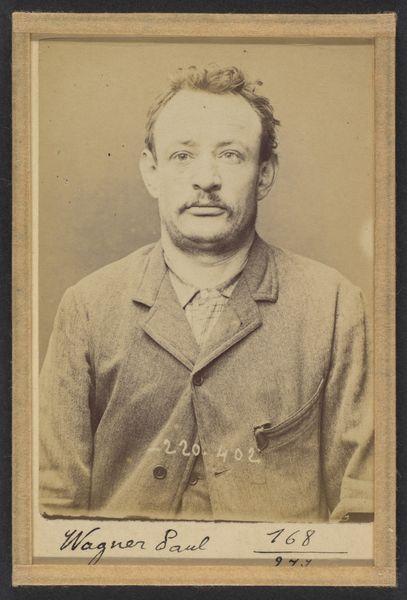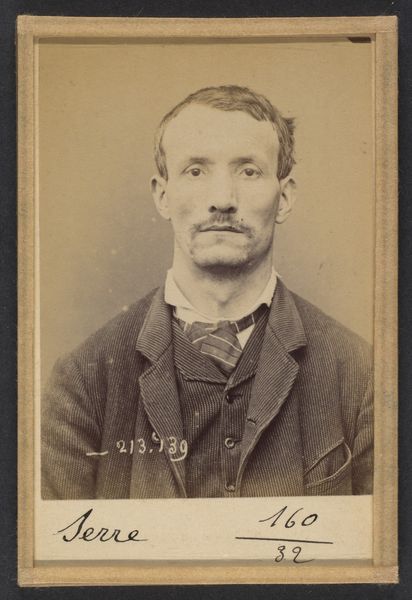
Ceaglio. Alexandre, Joseph. 42 ans, né à Turin (Italie). Employé de commerce. Anarchiste. 3/3/94. 1894
0:00
0:00
print, photography, gelatin-silver-print
#
portrait
#
portrait
# print
#
photography
#
gelatin-silver-print
#
men
#
history-painting
#
portrait art
#
modernism
#
poster
Dimensions: 10.5 x 7 x 0.5 cm (4 1/8 x 2 3/4 x 3/16 in.) each
Copyright: Public Domain
Curator: Alphonse Bertillon, the French police officer and biometrics researcher, took this gelatin silver print in 1894. The work, residing here at the Met, is titled "Ceaglio. Alexandre, Joseph. 42 ans, né à Turin (Italie). Employé de commerce. Anarchiste. 3/3/94." Editor: The lighting and sepia tones give this piece such a strange sense of calm. His expression is so… vacant? Though the sharp focus renders every wrinkle visible. Curator: Yes, Bertillon’s mugshots sought that hyper-clarity to catalog and categorize individuals scientifically. Photography became a tool for the state, recording and controlling. Ceaglio, marked as an anarchist, immediately falls under suspicion. Editor: Interesting! What I find visually arresting, too, is the tension between the detailed, almost clinical capture of the face, against the looser rendering of his clothes. The lapel lines almost bleed into the background. It makes the face appear separate from the body, almost as if the state is capturing not a person, but a type. Curator: Exactly. This photograph encapsulates the late 19th century's obsession with classifying human behavior, using emerging technologies like photography. "Anarchist" was more than a label, it was a predetermination. Editor: The choice of printing—gelatin silver—it's quite luminous for a mugshot. There's a strange beauty conferred by that process. It invites contemplation. Curator: True. Yet, that same luminescence throws the state's motives into sharp relief. While formally striking, its true power lies in its representation of societal anxieties and the authorities’ response during that time. Editor: Seeing the formal qualities with a firm contextual understanding of that time only amplifies the photo's gravitas. Curator: Agreed. It allows us to perceive this historical portrait as a chilling yet potent cultural artifact.
Comments
No comments
Be the first to comment and join the conversation on the ultimate creative platform.
